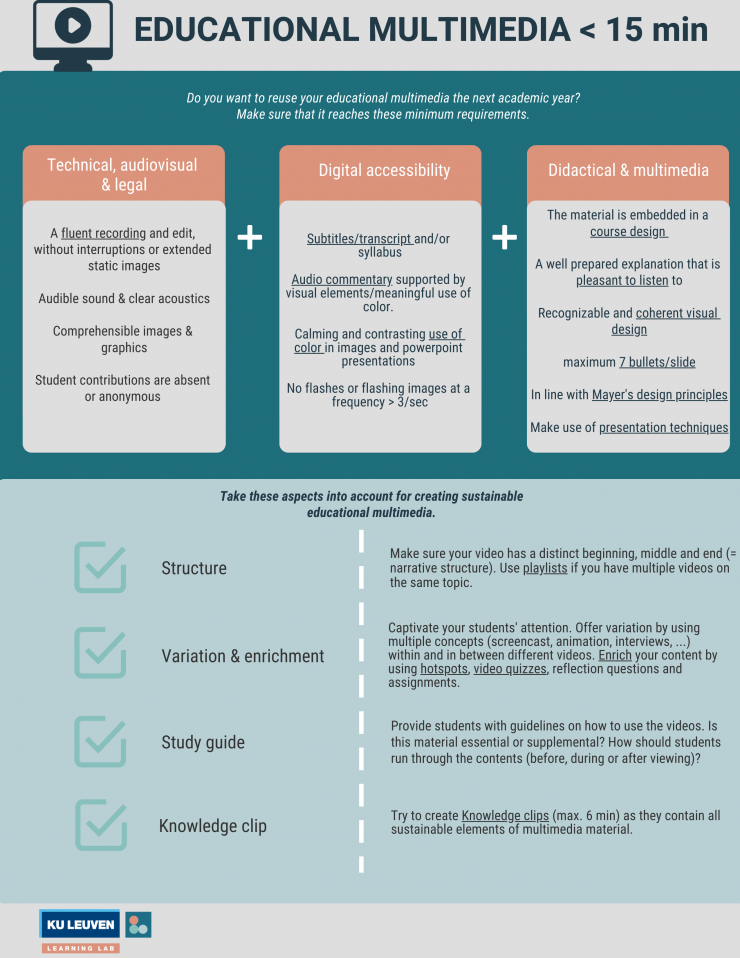As the amount of data produced by multimedia storage in higher education is constantly increasing, so is the demand for more data storage. As you can see below, internet traffic in KU Leuven increased dramatically the moment the epidemic began.

Up to now some 200,000 videos have been uploaded on our Kaltura platform with more than 100,000 viewers. Data storage and data traffic has a big impact on the (digital) environment. We want to build a reliable and durable context for video and in this short article we wanted to share with you how we have been working with faculty staff to explain how we are storing the 4 million gigabytes ( = 4 petabytes) of video content generated by the university.
Together with the educational staff, we organised two online co-working sessions and discussed our draft version of a decision tree shown below and how we should communicate this archiving story to the teaching staff in our faculties.

We gathered their input and concerns and decided to work on a guideline for academic teaching staff. Its purpose is to answer the following questions: is the material up-to-date for the coming academic years? How can you decide whether to keep it or to bin it?
It resulted in 2 different infographics shown here which help staff in the archiving process. There is a guideline for videos less than 15 minutes and one for long recordings more than 15 minutes. You’ll notice that each infographic has his own minimal requirements (the 3 main columns) and a checklist to help staff make their educational videos even more sustainable.
If you take a closer look at the infographic about shorter multimedia, you’ll notice that our requirements are higher and more extensive. The reason we do this is because we think that short knowledge clips are much more sustainable and very efficient.
Our main goal is to encourage teaching staff to produce well-thought-out knowledge clips which can be used as primary learning material. (link to the help platform)
However, we know reality is different. The majority of the produced videos are long lectures. We don’t consider them as primary but as additional learning material. Our advice is to integrate short knowledge clips in an online learning module.
If teaching staff want to make long recordings more efficient and more bearable for students, we encourage them to split up long recordings into short chapters and to integrate quizzes or hotspots to create variation and inter-activity.
We published our guideline on the learning lab website (currently only available in Dutch) to make it available to our educational staff.
Our guidelines and infographics are still work-in-progress. We are planning to make short video clips to illustrate and visualize the minimal requirements and the checklists. This way we hope that teaching staff can easily decide which recordings they keep and how they can produce durable educational multimedia in the near future.

KU Leuven’s Multimedia Team (Koen Vanderhoeven, Céline De Vos, Frederik Van de plas, Elke Van der Stappen, Stef Stes, Jade Stappaerts, and Evert Binnard)
















